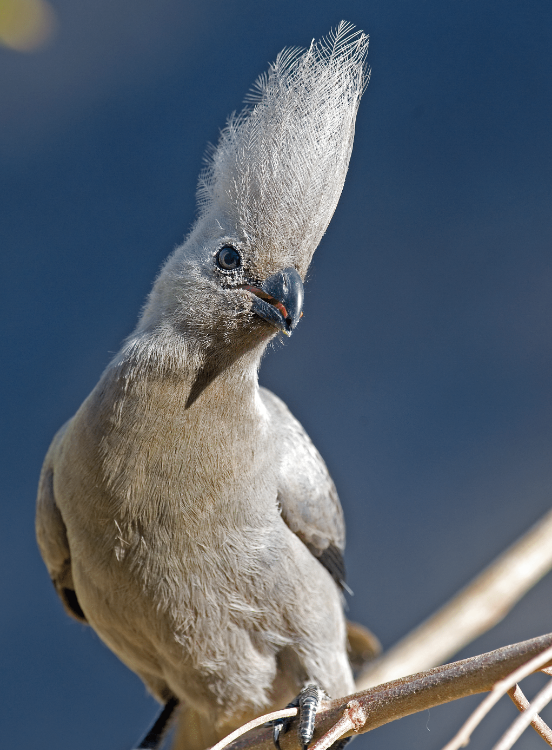Art colonies and craft centres in Namibia’s small towns
August 28, 2012Conny’s Restaurant – on the road to Sossusvlei
August 28, 2012Grey-backed Camaroptera
Camaroptera brevicaudata
by Pompie Burger
It always amazes me that once you’ve identified a specific bird, you suddenly seem to see it everywhere, even in places you’ve been before but never noticed it. The first time I become aware of the tailor-bird was in Mpumalanga near Klaserie where well-known ornithologist Dr Peter Milstein showed us the nest of the Green-backed Camaroptera (the South African counterpart of our own Grey-backed Camaroptera). After you’ve seen this nest, a real artistic piece of work, you will probably never forget this little bird. The nest is built with leaves that are ‘sutured’ together with fibres and cobweb threads to form a beautiful little nest.
Apart from their incredible building and sewing skills, Grey-backed Camaropteras have a very weird call, sounding rather like a small lamb calling its mother. Obviously this is where their initial name Bleating Warbler came from, a much more appropriate name than camaroptera. Their ‘other’ call is a constant loud penetrating kwit-kwit-kwit…, which, if heard in thickets and wooded undergrowth, sounds like a huge bird. Once you’ve seen it, however, its size is rather disappointing.
While the green of our own bleater is much more striking than that of the actual green-backed version, the colour is confined to the wings, contrary to the Green-backed Camaroptera, whose whole back is green.
The habitat of these cute little birds is semi-arid woodland, covering most of central and northern Namibia. Waterberg, for instance, is a prime spot for them. In fact, they are probably one of the most common birds in the park. Although not always so visible, they are definitely audible.
While this bird’s scientific name indicates that it has a short tail (brevicaudata), the tail is quite conspicuous, especially because it is flicked up and down constantly. Indeed, with its very interesting habits and call, it is definitely not part of the LBJ group. So when you do your walk in the woods, and you hear a constant call which sounds like a lion, take some time off and look for this interesting little lamb.
This article appeared in the Dec ‘09/Jan ‘10 edition of Travel News Namibia.
Based in Windhoek, Pompie Burger is an orthopaedic surgeon whose part-time passion is photography, in particular wildlife, and specifically birds. This regularly takes him to the most remote corners of the country, resulting in riveting images and articles.
Pompie is the author and photographer of the coffee table book Birds of Namibia, which was published in 2008. The book contains articles and photographs which attest to the insight and knowledge of an accomplished observer.
Read more of his articles in our Birding Section.


